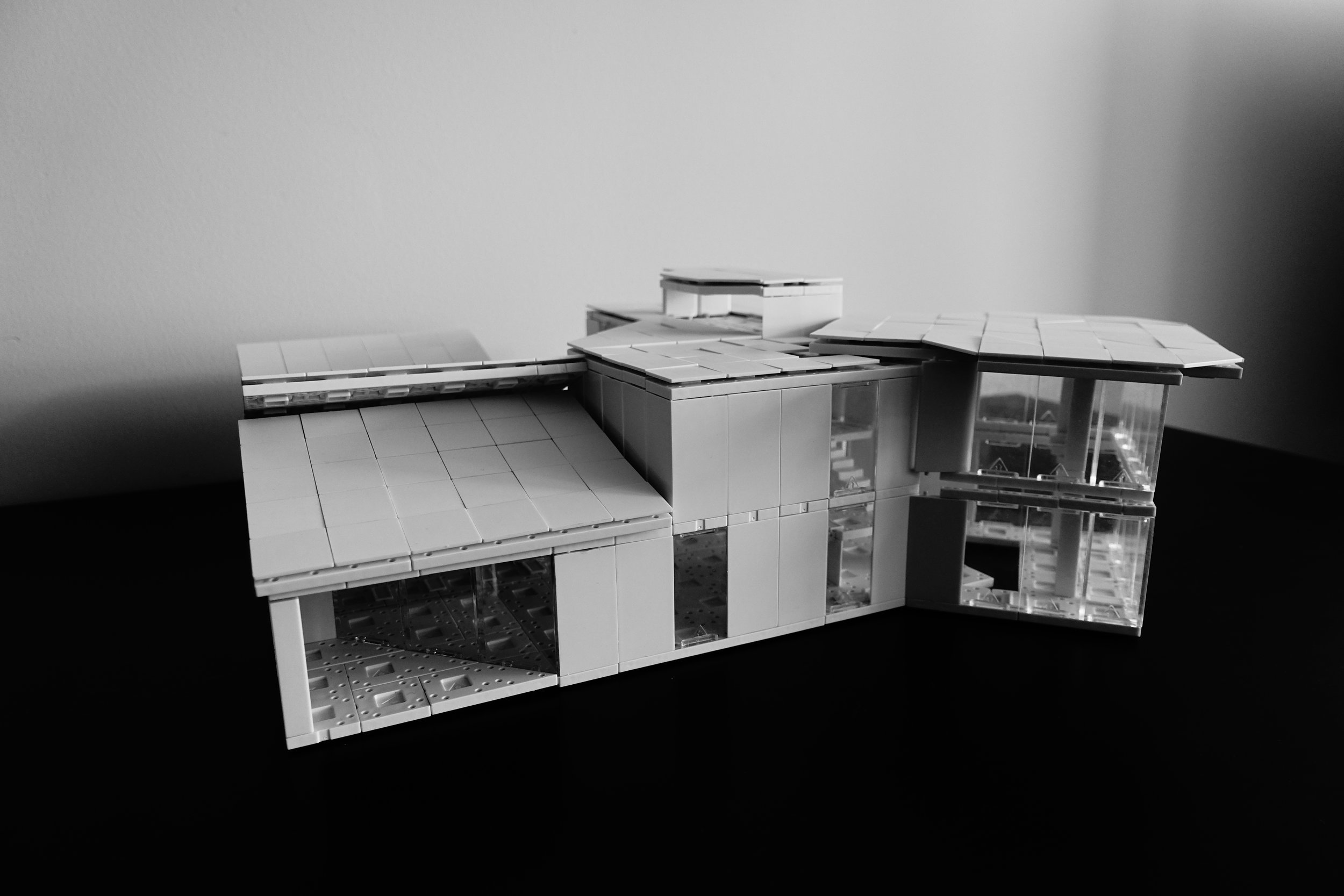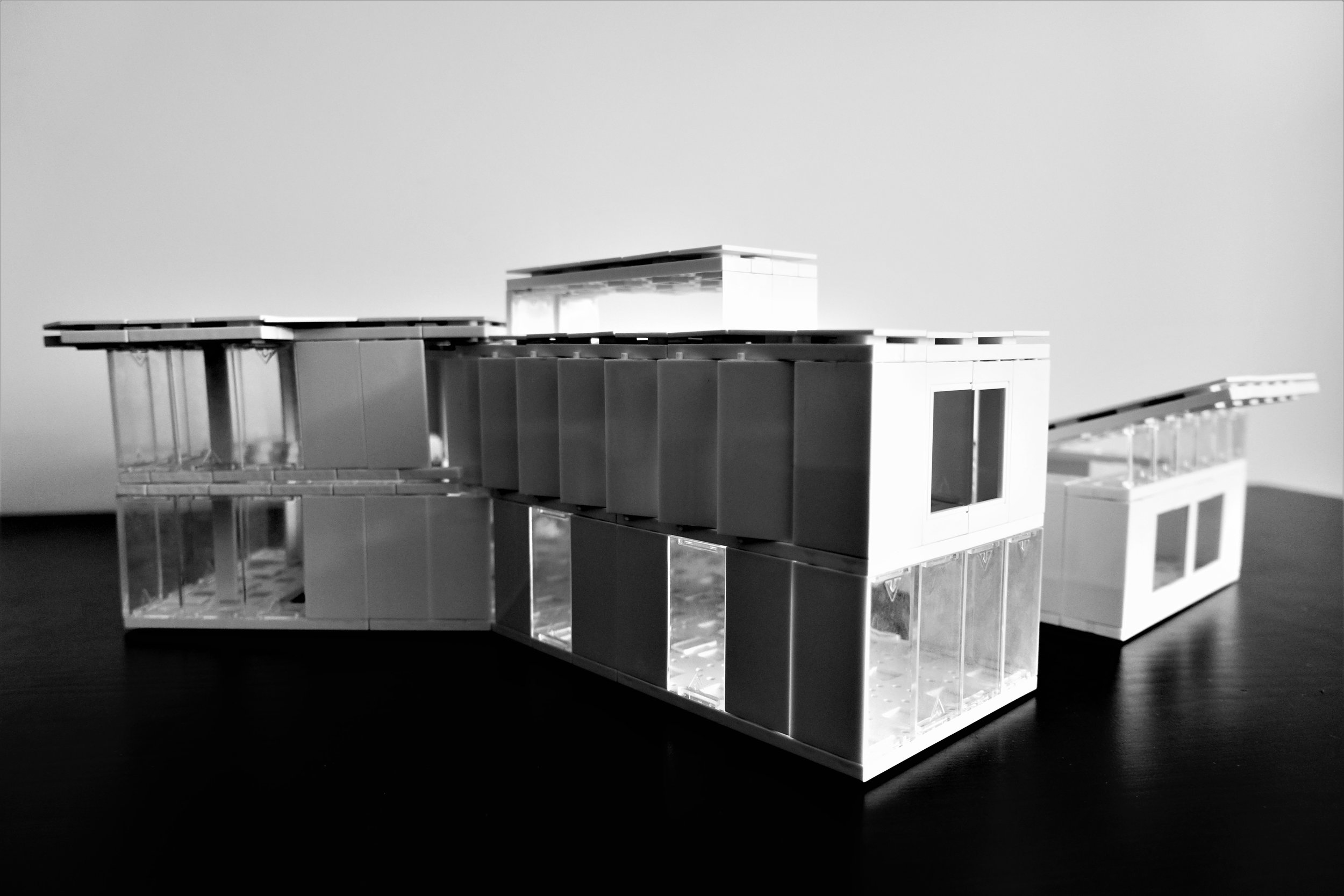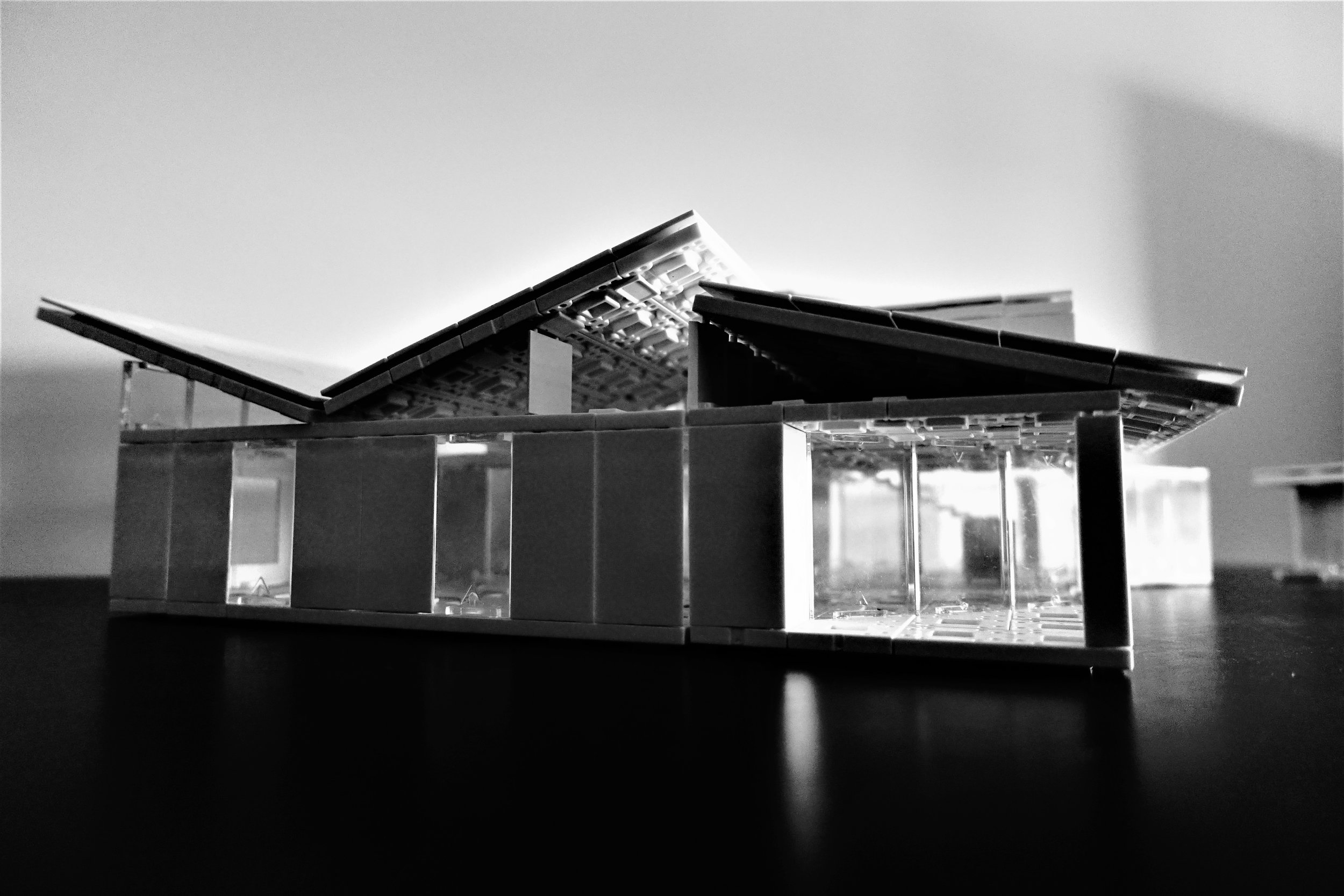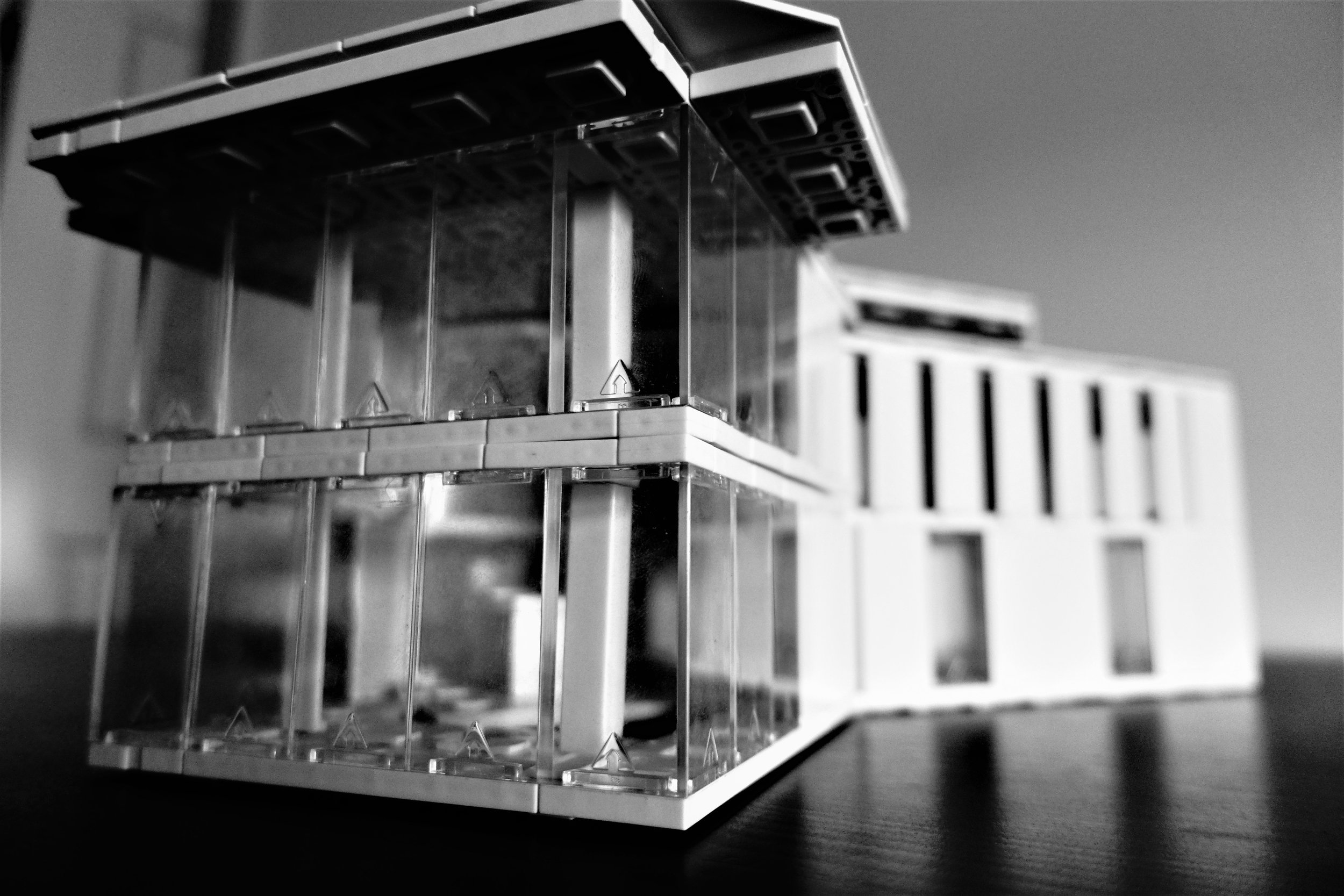ARCKIT Model 16
“We need to be a little like the farmer, who puts back into the soil what he takes out”
Hawaii Preparatory Academy Energy Lab
What is Net Zero?
Hawaii Preparatory Academy Energy Lab
The highest sustainability rank that a building can achieve is Net Zero. This means that the building or structure relies completely on exceptional energy conservation and on-site renewable generation to meet all of its heating, cooling and electricity needs. Going way beyond a green building, there is a holistic approach in Net Zero design where the materials and structure is tracked for their entire lifetimes.
It is only with this holistic thinking can we can get into the requirements of the Living Building Challenge and embark on the visionary path to a regenerative future.
David & Lucile Packard Foundation Headquarters
A World...
David & Lucile Packard Foundation Headquarters
We are entering a world of peak oil, peak water, peak phosphorus; a world that is globally interconnected yet ecologically impoverished. A world with seven billion people and counting. A world where every single major ecological system is in decline and declining exponentially. A world where global temperature increase means shifting rainfall distributions, acidified oceans, and potentially catastrophic sea-level rise.
We must remake our cities, towns, neighborhoods, homes, offices and all of the infrastructure spaces in between. This part of the reinvention of our relationship with the world is imperative to preserving it.
Omega Center for Sustainable Living
Living Building Challenge
At the time of writing this post, the Living Building Challenge is in its 3rd iteration. The Living Building Challenge is part of the Living Building Institute. To view the most current and up-to-date version of their documents visit their website at living-future.org/lbc.
Omega Center for Sustainable Living
The Living Building Challenge sets goals for a designer or architect to re imagine a world of living and interconnected structures. By building a diverse environment with quality placemaking we create a space that people value and respect. When people feel proud of their environment, their health, productivity, and overall happiness increases.
The Living Building Challenge states that...
Design professionals, contractors and building owners need to create a foundation for a sustainable future in the fabric of our communities.
Politicians and government officials need to remove barriers to systemic change and realign incentives and marketing signals to protect health, safety and welfare of people and all beings.
Everyone needs to reconcile the built environment with the natural world, thus creating greater biodiversity, resilience and opportunities for life with every adaptation and development.
Betty + Clint Josey Pavillion
The missions is simple. To make the world work for 100% of humanity in the shortest time possible through spontaneous cooperation without ecological offense or disadvantage to anyone. The challenge makes us think of sustainability at the highest level possible where every single act of design and construction can be an opportunity to positively impact the greater community. Regardless of size or location, there is a framework for design, construction, and the symbiotic relationship between people and all aspects of the community.
There are two rules to become a living building...
Betty + Clint Josey Pavillion
The guidelines set by the challenge are not optional. All imperatives are mandatory. The success of the project relies on the teams above meeting all the imperatives and reaching for that ideal outcome.
The certification is based on the actual built product rather than the modeled or anticipated. Therefore projects must be operational for one year prior to evaluation and assessment.
The Living Building Challenge highlights seven mandatory categories as indicators for creating a successful regenerative environment. What if every single action in design and construction made the world a better place? With our needs doubling every ten years, incremental change is nowhere close to viable.
Sacred Heart Lower and Middle School Stevens Library
Place - Restoring a Healthy Interrelationship with nature. Exploring the limits of growth, urban agriculture, habitat exchange and human powered living.
Water - Creating developments that operate within water balance of a given region and climate. Looking at net positive water usage with the site and its surroundings in mind.
Energy - Relying only on solar income and other regenerative energy systems. Focusing on net positive energy where at least 105% of the project's energy needs are met yearly and providing on-site energy storage for resiliency.
Health and Happiness - Creating environments that optimize physical and psychological health and well being. Promoting a civilized environment with healthy interiors featuring biophillic reactions.
Materials - Endorsing products that are safe for all species throughout time. Monitoring our red list to control our embodied carbon footprint. With a responsible industry we have a chance for net positive waste.
Equity - A goal to support a just and equitable world with human scale and human places and provide access to nature and structures all while investing in just organizations.
Beauty - Celebrating and emphasizing design that uplifts the human spirit and stressing inspiration and education.
There is so much to cover and address with net positive design. With future Net Zero models I will be looking at all of these imperatives in further detail.
The zHome
Project Details
Visual Learning Center
Today I present Arckit Model 16, a Net Zero structure with the programming for a Public Learning Center or Educational Library. The standard unit measurement in Arckit is 4 foot. For this model, I've manipulated the scale to make it so that the single unit is 6X6 feet and each wall is 12 feet high. The design of this structure is a flexible learning environment that can accommodate traditional library functions. On top of that, it would support a cross-disciplinary and project-based learning program where small group work, digital learning and informal gathering are emphasized through visual demonstrations and hands-on activities.
This Learning Center features a design that embraces passive cooling/ventilation and passive lighting with an open program and sun shade devices. With a green butterfly roof over the Visual learning Center, not only are the building's electrical needs met with a solar array but, rainwater is collected and used for on-site irrigation. Above the computer lab is a blue roof that collects, stores and filters water for circulatory cooling and heating. Surrounding the building is a living garden that acts as a bio-swell for limiting site runoff and erosion.
Section Cut of Main Stairwell
The Visual Learning Center is a space where the basics of sustainable concepts are put on display. With definitions, descriptions and visuals pertaining to building assemblies and the living building challenge.
The Outdoor Demonstration Lab is an outdoor space in the south courtyard where people are able to see the rainwater collection system as well as the demonstrations of rainwater retention, green roofing and PV arrays.
The Fabrication and Modeling Lab allows people to interact with materials and build up/test out ideas allowing for hands-on and active learning.
North Atrium Space and Reading Corner
The North Atrium is a public gathering space for groups, providing a multi-use well lit environment for collaboration or presentations.
Upstairs lies a computer lab and group study area for research and private study.
Overall this structures provides a framework for engaging environment that emphasizes sustainable education and social awareness through hands-on demonstrations. As one of my favorite models so far, this building was easily constructed with Arckit and wouldn't be possible without their new angled pieces. Make sure you check out the video documentation below!
North Atrium Plan and Section Cut and view of Sun Louvres.
Diagramming
Abstract Materiality Rendering
Second Floor Plan
First Floor Plan
East and North Elevations
Photo Gallery
Video Documentation
Notes
If you have any questions, suggestions or comments, I would love to hear from you in the comments section below or through email at rikysongsu@gmail.com.
For more information regarding Arckit visit www.arckit.com or to see all the models visit www.rikysongsu.com/model
Thank you!




























